What Is Statement of Account: Definition, And Sample Formats
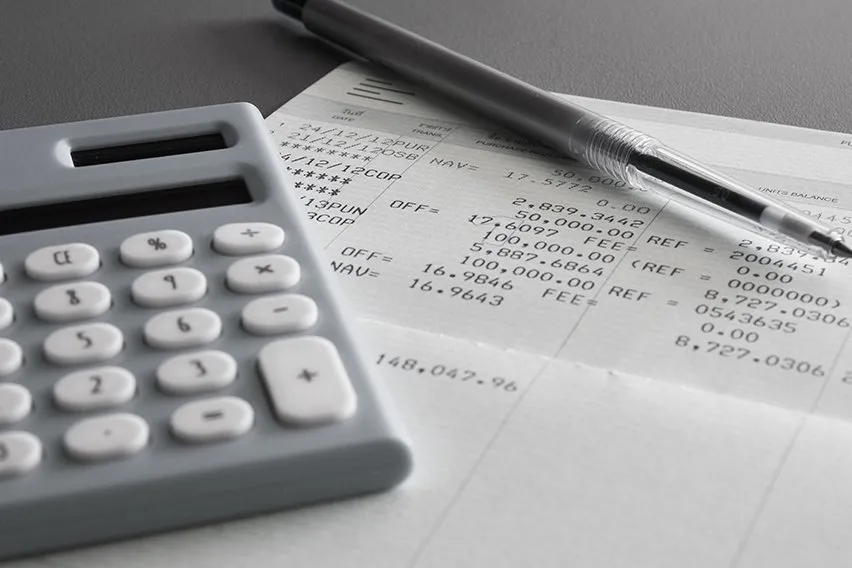
A statement of account, or account statement, is issued by a vendor to a client. It lists all financial transactions between the two businesses within a specific time period (typically monthly). The statement may reflect a zero balance, if not, the outstanding balance acts as a reminder to the client that money is due, similar to sending a bill to the client to request money owed.
Incorporating invoicing software into your business practice can help you keep track of account activity and ongoing transactions and help you send out professional-looking Statements of Account to clients. If you are thinking about streamlining your small business and want a service that automatically tracks transactions for you, try FreshBooks for free by clicking here.
Key Takeaways
- Monthly account statements are documents listing all outstanding transactions between two businesses within a specific statement date range
- These documents are provided to a client by a vendor
- If the total balance due is not zero (with one or more invoiced amounts left unpaid), it may remind clients to make good on outstanding payments
- Statements of account may be important to customers as well, as they help them track their pending payments and stay up-to-date
Table of Contents
- What is a Statement of Account?
- Is a Statement of Account an Invoice?
- Why Is a Statement of Account Important?
- What Goes into a Statement of Account?
- Types of Account Statements
- Bank Statement of Account
- Sample Format of Account Statement
- Conclusion
- FAQs on Statement of Account
What Is a Statement of Account?
A statement of account is an account summary produced by a vendor and given to a client, providing information about all outstanding transactions that have taken place between the two businesses within a specific date range.
All purchases made and payments received can be listed in detail on the statement, but a statement that only shows outstanding transactions is more common since it’s generally used to remind clients to pay. If the balance due at the end of the statement is not zero, the account holder will be reminded to make any outstanding payments.
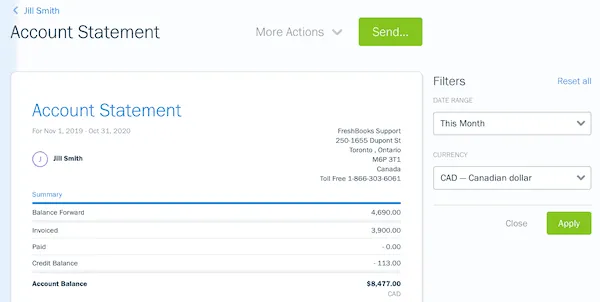

Is a Statement of Account an Invoice?
No, it is not an invoice. The statement of account acts as a report issued by a vendor that captures the financial transaction history between two businesses within a specific date range. An invoice, on the other hand, is a bill for a single transaction.
Account statements are typically delivered in PDF format through email, listing all invoice amounts, payments received, and refunds from the vendor. As all invoices and payments are listed, it is easy to see if there have been any missed payments, acting as a payment reminder.
An invoice:
- Describes the items purchased (or services provided) and cost per unit.
- Adds taxes.
- Displays the total amount owing.
- Provides invoice payment terms and payment details.
If you are uncertain about what an invoice should look like, an invoice template is an easy way to format a professional-looking document. FreshBooks offers free invoice templates that are simple to use. Click here to create your invoice now.
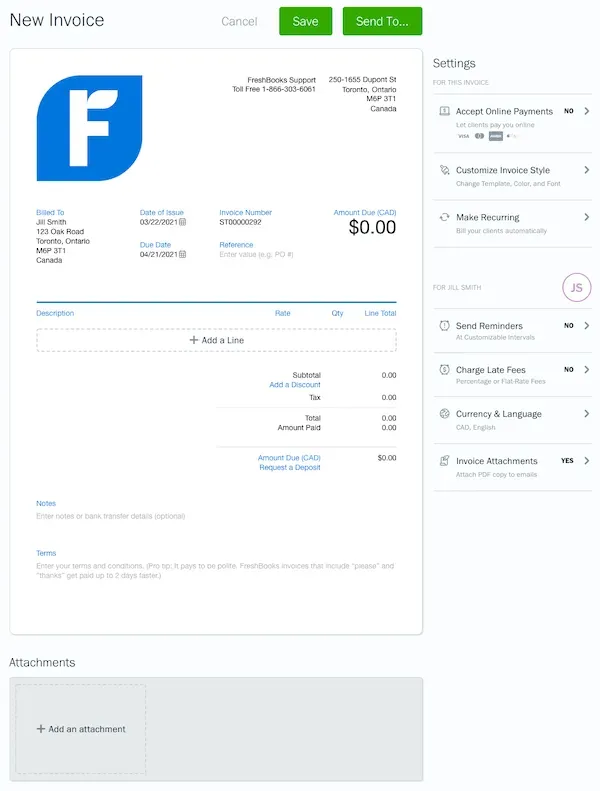
A statement of account:
- Lists all previous invoice amounts, with invoice numbers and dates, as individual line items.
- Lists all the transactions that took place in a defined period
- Payments or credits are laid out as individual line items.
- Displays any outstanding balances
- Cost buckets (more on that below).
Both will list contact details and other important business information.
Why Is a Statement of Account Important?
It is a tool for vendors to remind customers that their accounts are not yet fully paid. It is also important for the client because it allows them to track their spending, check for double payments, and stay up-to-date on missed payments which can help them save money on late fees.
This is important because the resulting client payments increase a vendor’s cash flow and allow the business owner to spend the money on the resources they need to keep the business going.
What Goes into a Statement of Account?
There are many different statements of account templates, but typically an account statement shows the vendor and client business information, date of issue, statement number, client’s account ID #, balance from the previous period (from the last statement of account issued), and all transactions.
Each transaction is given its own line: an invoice, payment, or credit. An optional payment slip may also be included. Business information provided includes the vendor’s business name and client name, vendor and customer’s physical address, phone number, and email.
Because a company may have many invoices out to the same customers with different due dates, a vendor often includes a section that lists “time buckets,” showing how overdue a particular amount is. Time buckets in a recurring customer’s statement could look something like this:
- Current: $42.00
- 0 – 30 days: $0.00
- 31 – 60 days: $0.00
- 61 – 90 days: $0.00
- 90+ days: $0.00
This example would show a customer currently owes $42.00, with nothing overdue and no additional fees charged.
Lastly, a note may remind the customer that this is not a bill but a statement.
Types of Account Statements
There are three main types of account statements that, when put together, can give a solid picture of the overall health of a business. These snapshots of incoming and outgoing cash flow are important to determining profitability, financial position, and cash movements.
Balance sheet
A snapshot that shows a company’s financial position, with a balance between assets, liabilities, and equity, is used to determine the health of a company.
Income Statement
Also known as a profit and loss statement, this document shows the difference between the revenue and expenses generated by a company, used to figure out the net income, which becomes part of the shareholders’ equity.
Cash Flow Statement
This statement shows how much cash is entering and leaving the business within a set period.
Bank Statement of Account
Banks provide personal finance bank account statements (including checking, savings, and credit card accounts) that are similar to statements generated by small businesses for their clients, as they list every transaction during a specific time interval. Personal account statements are less popular today because customer activity has changed, as people can now go online to see to-the-minute transactions.
Sample Format of Account Statement
No universally specific format is used for account statements, as this varies depending on the business and the types of information they want to enclose. You can find free templates for account statements to use online, including FreshBooks templates that may resemble the following image:
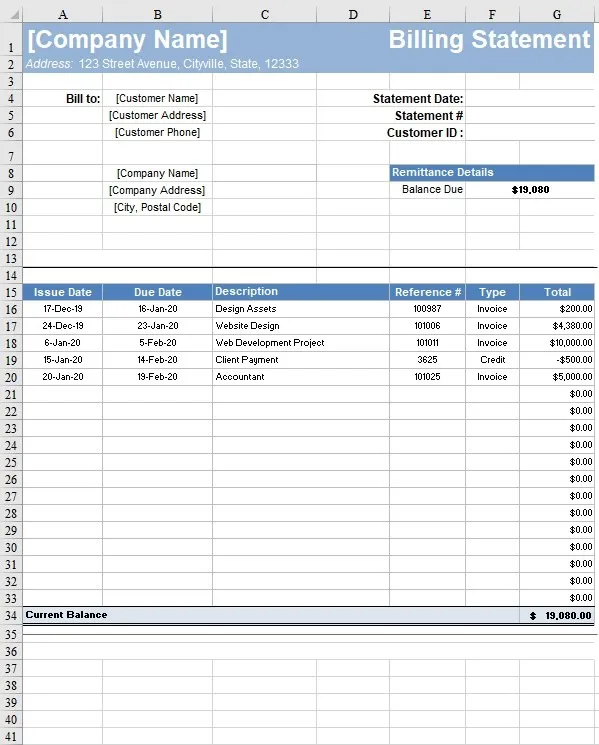
Conclusion
Customer statements of account are important documents sent from vendors to customers that reflect every transaction and payment between the two businesses in a specific period. Sending a statement of account to a client is not only a courteous business practice, as it provides them with the information they can use to document their spending. It also acts as a reminder of any unpaid sales invoices.

FAQs on Statement of Account
What are the benefits of a statement of account?
It is a document that acts as a recap of all items or services billed to a client, as well as confirmation of payments that have been received. Account statements can help identify mistakes and act as reminders of unpaid invoices, delivered in a professional manner.
Who issues a statement of account?
The seller issues this important financial information to the customer, usually on a monthly basis. This document lists every transaction that took place between both businesses, including invoices and all payments made.
When should a statement of account be issued?
These are typically issued monthly statements, but only after a customer has agreed to open an account and who has signed a contract detailing the terms of the agreement between the two businesses.
Is the statement of account proof of billing?
A bank statement can be used as proof of billing when you require documents to prove your identity. A statement of account is a different document sent between businesses documenting purchases and payments between them.
What is the purpose of the statement of accounting policies?
When a larger organization issues financial statements, it will include its accounting policies, like how expenses are accrued, how assets are capitalized, etc. For a smaller business, this is not usually prepared.
Reviewed by
Jami Gong is a Chartered Professional Account and Financial System Consultant. She holds a Masters Degree in Professional Accounting from the University of New South Wales. Her areas of expertise include accounting system and enterprise resource planning implementations, as well as accounting business process improvement and workflow design. Jami has collaborated with clients large and small in the technology, financial, and post-secondary fields.
RELATED ARTICLES


 Debit vs Credit: What’s the Difference?
Debit vs Credit: What’s the Difference? What Are Trade Receivables?
What Are Trade Receivables? What Is a Tax Write Off? Top 10 Deductions for Businesses
What Is a Tax Write Off? Top 10 Deductions for Businesses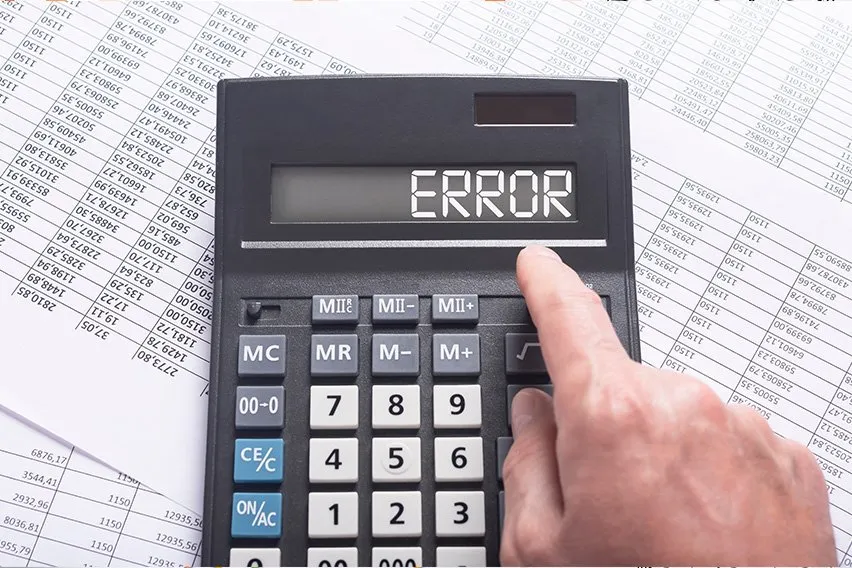 Types of Errors in Accounting: A Guide for Small Businesses
Types of Errors in Accounting: A Guide for Small Businesses What Is Product Cost?
What Is Product Cost?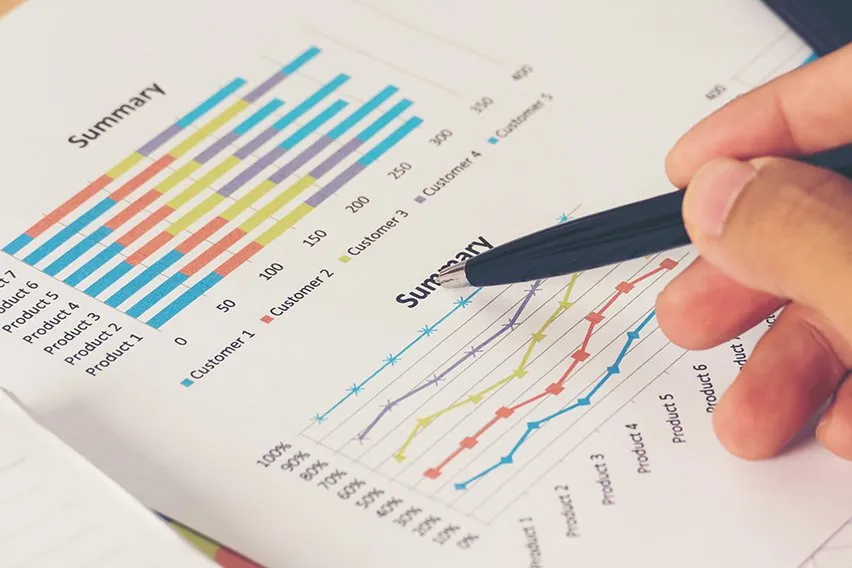 What Is Credit Risk? It’s the Ability to Repay a Loan
What Is Credit Risk? It’s the Ability to Repay a Loan